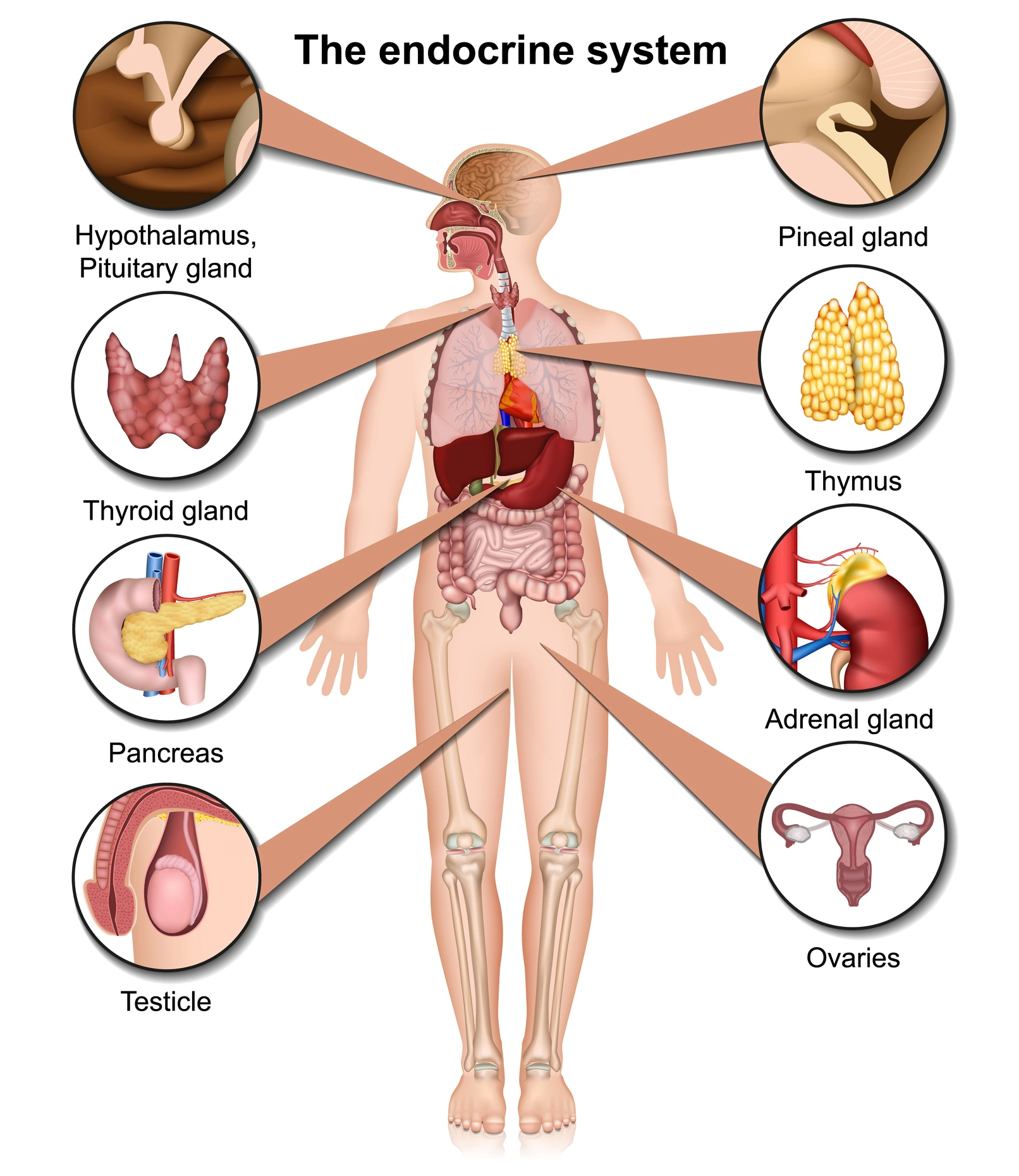What causes Acromegaly?
In 98% of all reported cases, Acromegaly is caused by an adenoma (i.e., benign tumor) of the pituitary gland that secretes excessive growth hormone (GH). In extremely rare cases, there is no tumor in the pituitary gland, but another non-pituitary tumor usually located in the chest or abdomen area that produces growth hormone-releasing hormone (GHRH).
Pituitary Adenomas
The most common type of tumor is a non-cancerous, or benign, tumor in the pituitary gland, known as a pituitary adenoma. The location of this tumor causes the pituitary gland to produce excess growth hormone, leading to abnormal growth.
Pituitary tumors are not genetically inherited from parents. They can appear randomly, due to a small genetic change of one cell within the gland. Over time, this cell will replicate and form a tumor, called an adenoma. Adenomas are not malignant, because they do not spread to other parts of the body, but they may cause problems due to their size and location. As the tumor grows, it can put pressure on surrounding brain tissue. Because the skull is a closed space, this growth can crowd the remaining tissue, leading to headaches and vision problems.
The location of the tumor means that the production of other hormones can also be affected. The impact can be different for men and women, due to the type of hormone affected. Women may find that it affects their menstrual cycle, while some men experience impotence. Around 17 percent of the population are thought to have small pituitary adenomas that do not usually produce excess GH or cause any symptoms. It is only when a larger tumor occurs that the problems arise.
It is also important to note that most pituitary adenomas do not secrete any hormone. However, of the ones that do, growth hormone-secreting adenomas account for a third of cases.
Non-Pituitary Adenoma and Other Causes
In rare cases, a tumor elsewhere in the body, such as the lungs, adrenal glands, or pancreas, can lead to an overproduction of growth hormone, resulting in symptoms of Acromegaly. Non-pituitary tumors found in other areas of the body like the abdomen and chest can also cause Acromegaly in extremely rare cases. The pituitary gland responds to a stimulus to produce GH. For example, some hypothalamic tumors may secrete growth hormone-releasing hormone (GHRH), which tells the body to produce GH.
Sometimes, Acromegaly is due to increased growth hormone production from outside the pituitary gland, such as from neuroendocrine tumors like small cell lung cancer or carcinoid tumors.
This tiny but powerful gland that secretes hormones that control major functions in the body. It is responsible for controlling the release and production of hormones that control growth, sexual development, reproductive function, responses to stress, and metabolism.
The thyroid and adrenal glands are also controlled by the pituitary gland and it also regulates your energy levels and balance of salt to water in the body. The pressure that a tumor places in this area disrupt the delicate balance of the systems it controls.
Acromegaly is a serious systemic condition.
Acromegaly is the name for when your body has too much growth hormone (GH) circulating in your system. The overproduction of GH that causes parts of the body to grow is usually caused by a tumor in the pituitary gland. The pituitary gland is very small, only about the size of a pea, but it is the most important gland in your body’s endocrine system.
This small endocrine gland called the pituitary is located inside of the brain directly behind the nose. When a tumor is present inside of this powerful hormone production center, it causes the gland to secrete growth hormone unnecessarily. This leads to the soft tissues in your body to expand. In young children whose bones have not fused together yet, they will grow so tall that they look like giants. This is not Acromegaly, but a condition called pituitary gigantism.
Both Acromegaly and gigantism are challenging to adapt to physically and emotionally for those living with it. The changes happen so gradually in adults that it takes a decade on average to diagnose.
References:
The Pituitary Society (2003, November 26) The Symptoms of Acromegaly, What is Acromegaly? [Website]. Retrieved January 2020.
NORD (1998, December 12) Rare Disease Database – Acromegaly causes [Website]. Retrieved January 2020.
Cedars Sinai (1999, November 26) Diseases and conditions, Acromegaly – Causes [Website]. Retrieved January 2020.
NHS (2000, February 26) Diseases and conditions, Acromegaly – Causes [Website]. Retrieved January 2020.


